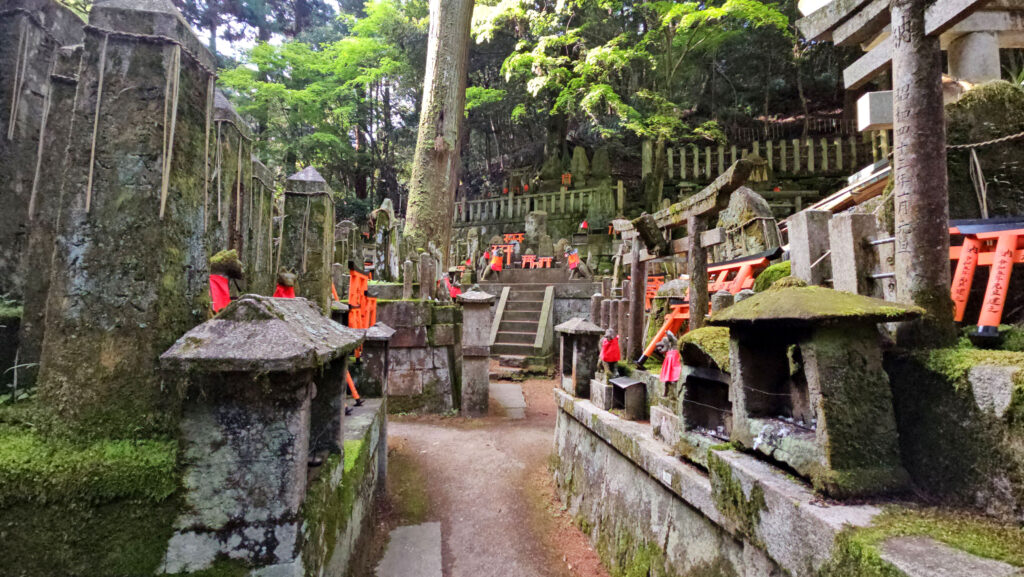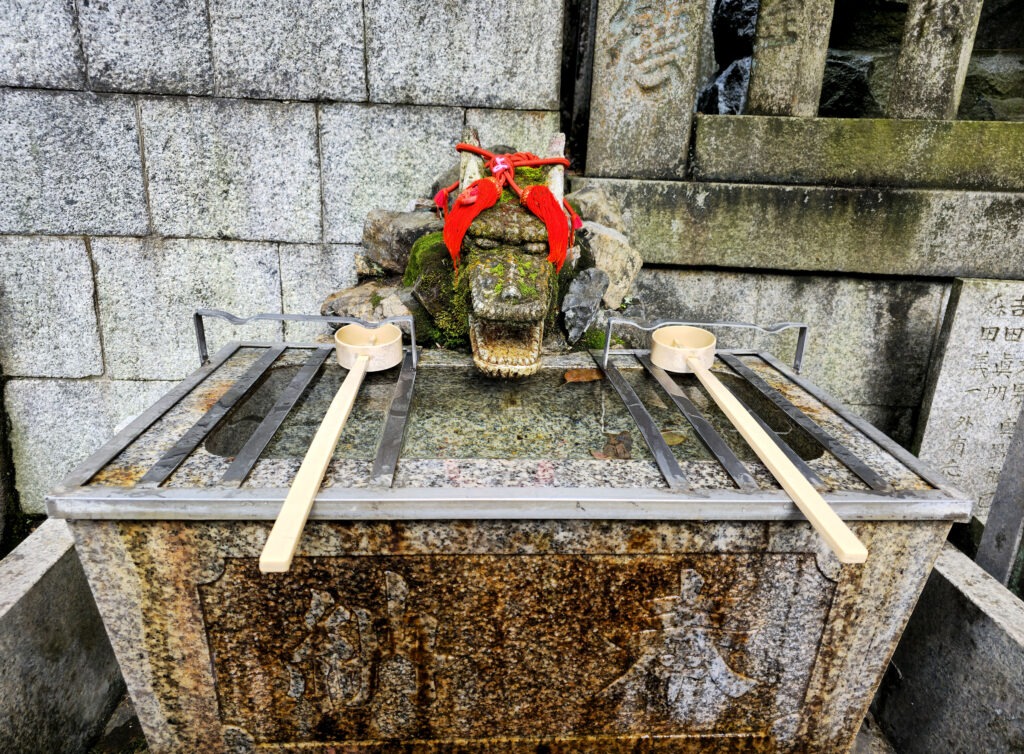Are you interested in exploring one of Japan’s most iconic and picturesque destinations? Then don’t overlook this guide to Fushimi Inari Taisha, the renowned shrine adorned with thousands of red torii gates. ⛩️.

The historical background of Fushimi Inari Taisha shrine
You’ve probably seen those cool red gates, also known as toriis, winding up the mountain. But guess what? Behind those gates, there’s a super old and fascinating story.
The name “Fushimi” actually means “mouth of the river.” It’s because this shrine is nestled near the point where the Kamo and Uji rivers converge.
Fushimi Inari Taisha stands as the primary shrine devoted to Inari, the Shinto deity associated with rice, harvests, prosperity, and success. It is believed that the cult of Inari dates back to several centuries before our era, but it was during the Nara period, in the year 711, when the Hata no Irogu clan, a powerful and influential family, decided to officially enshrine this deity at the top of Mount Inari.

Legend has it that an ancestor of the clan shot an arrow with a rice cake, which transformed into a swan and flew to the mountain. There, miraculously, rice began to grow. Following this event, the shrine gained prominence and received imperial protection, particularly during the Heian period (794-1185) when Kyoto became Japan’s capital. Fushimi Inari Taisha underwent several expansions and renovations, with the most recent major overhaul occurring in the 17th century.
Moreover, Inari became affiliated with the Buddhist temple To-Ji due to the Hata clan’s donation of wood for its construction. As a result, Inari became a deity revered in both Shinto and Buddhism, without distinction or contradiction.

Fushimi Inari Taisha at present
The current shrine, built in the nagare-zukuri style, originates from 1499 and comprises various structures and buildings. Among the most notable features are the thousands of red torii gates that delineate the path across the mountain. These torii represent donations from individuals, families, or companies expressing gratitude to Inari or seeking blessings. It’s believed that the entire area houses over 10,000 torii gates, spanning approximately 4 square kilometers. Some gates bear inscriptions containing the names or messages of the donors.

The journey through the torii gates offers a distinctive and memorable experience, which can range from one to three hours based on the pace and stops along the route. Along the path, visitors can encounter numerous statues of foxes (known as kitsune), considered messengers of Inari, often carrying rice keys in their mouths—a symbol of abundance. Furthermore, several side altars are available for making offerings or purchasing charms. The pinnacle of the tour is Mount Inari, standing at a height of 233 meters and providing stunning vistas of Kyoto.

You don’t have to reach the summit to admire the shrine’s beauty. However, if you have the time and energy, it’s definitely worthwhile to ascend and relish the panoramic views of Kyoto from the top.

Nowadays, Fushimi Inari Taisha isn’t just a spiritual pilgrimage site but also a globally acclaimed tourist attraction. People from around the world are captivated by the distinctive blend of architectural marvels and natural beauty that this place offers.
Rising popularity and cultural influence
It’s interesting to note that merely twenty years ago, Fushimi Inari Taisha Shrine was relatively unknown to many tourists exploring Kyoto. However, today, it stands as one of the most frequented and photographed sites in Japan.
Undoubtedly, the movie “Memoirs of a Geisha” played a pivotal role in its rise to popularity, along with subsequent film and television productions like “The Wolverine“.

The shrine has also been showcased in various anime series like “Inari Kon Kon“, “Kyoto Teramachi Sanjou no Holmes” and “Fruits Basket“. These shows have highlighted the shrine as a distinctive location within their narratives.
Recommendations and tips
Fushimi Inari Taisha is accessible year-round, yet it’s exceptionally stunning during spring’s cherry blossom season and autumn’s foliage transformation.
The shrine remains open 24 hours a day with free admission. It’s advisable to arrive early or at dusk to evade crowds and excessive heat. Moreover, during these times, sunlight creates beautiful effects on the torii gates.

Don’t forget to bring comfortable shoes and water as the path is lengthy and includes some slopes.
For those aiming to capture pictures without crowds, patience is key—waiting for the opportune moment is essential. Alternatively, consider taking the less crowded trails flanking the main torii tunnel.

If you’re short on time or not keen on the full tour, you can get a good glimpse of the torii gates in the lower section of the shrine, where two shorter, parallel tunnels are located
How to get to Fushimi Inari Taisha
Fushimi Inari Taisha has excellent connections to Kyoto. It’s just a five-minute stroll from Fushimi Inari Station of the private Keihan company and a three-minute walk from Inari Station on the JR Nara line (covered by the JR Pass), making it easily accessible.
If you possess the JR Pass, you can use the JR Nara line and reach Inari in under 10 minutes. Note that the rapid trains bypass Inari, so it’s advisable to opt for the local service.
Both the JR and Keihan lines offer connections to Nara, making it convenient to plan visits to both destinations on the same day. Starting early with a visit to Fushimi Inari to avoid crowds, then traveling from Inari Station to Nara could maximize your exploration of these captivating places for the day.
Where to sleep in Kyoto
We suggest staying in a machiya, a traditional Japanese house, especially if you’re traveling with your family.
🏠 Machiya:
Si preferís alojaros cerca de la estación de Kioto, este hotel está a tan solo 3 minutos:
🏩 Near Kyoto Station:
Our top choice for accommodation is in the Gion district. Hotel ZIZI Kyoto Gion offers remarkably spacious rooms with balconies at very reasonable rates.
🏨 Near Gion:

If you visit Kyoto, Fushimi Inari Taisha shrine is an absolute must-see. Be ready for plenty of walking and climbing numerous stairs. However, I assure you, it’s absolutely worth it. 😉.



